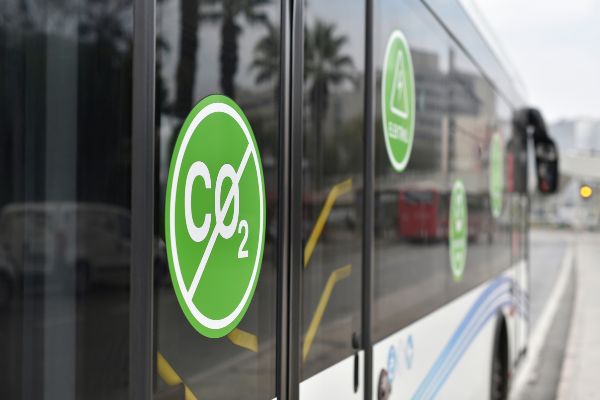Allocate duties legally and with optimal resource
Sickness, booked leave, rest days and last-minute schedule changes mean that 10-15% of duties need to be reallocated on any given day. The challenge for operators is maximising the efficient use of available resources to cover this open work – and ensure duty allocation remains legal and assigned in the most effective way.
A key function of depot allocation is to automate daily operations where no human intervention is required and come into its own when it is, making forward and on-the-day allocation a breeze.
The controller should have clear visibility of the best matches for allocating uncovered work – and see this in an unbiased way. Information must be quick to locate and provide a summary of key details critical to making those informed decisions. For instance, only those that meet drivers’ hours, union agreements, local labour rules and company guidelines are listed. One important safeguard is the software will not let the controller make an illegal allocation and stop them at every attempt. This control of staff against relevant drivers’ hours legislation and company rules will offer assurances that drivers are only allocated to duties they are legally able to complete.
Additionally, each drivers’ route and vehicle type training should be automatically captured so work is only assigned to staff who have prior knowledge of both. To ensure quality decision making, the controller needs to be alerted at the point where work is being considered where relevant experience is lacking. This adds another layer of confidence when making those quick decisions and potentially helps to prevent incidents that risk reputational damage.
An important part of the reallocation decision process is the financial impact on the business. With bus driver wages accounting for around 41% (1) of operator costs, the controller needs to know when allocation choices will have a negative impact on pay. This way only the best driver in terms of legal rules and cost is chosen for the work. The simplicity to quickly identify available drivers and assign duties to them means the operator’s non-driving paid time can also be reduced.
These capabilities become extremely important as operators not only look to rebound from COVID, but also to continue to respond to significant national and local drivers of change such as transforming for net zero, meeting Bus Service Improvement Partnerships (BSIP) requirements and shaping for future work.
Quickly capture planned and real-time data
Schedules do not always go to plan in a live environment. Any number of situations can arise from unfavourable traffic conditions, accidents and vehicle incidents to driver absences and lateness. Far rarer are national emergencies such as the restrictions imposed on operators at the start of COVID. In all cases, bus operators must respond quickly and effectively to real world changes.
To do this effectively, operators need to capture operational activities as they happen such as planned and unscheduled leave and events relating to accidents, complaints and disciplinary action. At the same time documents and DBS checks, data relating to CPC training and the expiry date of each driver’s CPC card, and issued equipment need to be recorded along with driver route and vehicle knowledge.
Operators also need to better track their vehicles to quickly resolve allocation issues. The controller needs to see the assignment of buses to specific trips with all available, used and out of service vehicles displayed. The traffic office also needs visibility of allocated and unallocated running boards that are identifiable with mismatched buses as well as supplementary information on vehicle data, branding criteria and parking locations.
For the smooth running of the business, it would be helpful for the operator if all this data could be captured automatically by one easy-to-use system that did not burden the busy controller. The traffic office’s workload can further be reduced by empowering drivers to manage their own duties, holiday and swaps.
Benefits of payroll integration
Paying drivers correctly can be a challenge for bus operators. To avoid under and overpayment and retain a motivated workforce, pay needs to be accurate and account for actual hours worked, including overtime, duty rates, duty changes and so on. A depot allocation system with payroll integration is one way round this, and it can have multiple benefits for the operator and drivers.
Firstly, it can save money. A controller who can see the cost of allocation can assign work to a driver who, for example, needs to meet their guaranteed paid hours and is legal to do so rather than one who would be on overtime.
Secondly, it can increase efficiency because pay is calculated at the point of allocation. Also, it would be useful for the operator to have a system that automatically recalculated pay if a driver was involved in an incident and pushed into overtime. This would remove the burden from the controller and reassure drivers and the operator that payment is accurately recorded against hours worked.
Finally, the controller needs a simple process to close the day or week and the finance department wants a fully accurate payroll-ready file that requires no data manipulation. Operators can reduce the risk of errors and improve efficiency if they were able to pass data between departments or teams without the need to share files and emails. By doing so, they would remove the need to create multiple versions of the same document. In terms of payroll, the traffic office will have a hassle-free way of sharing payroll data with finance, with neither team having to rekey information.
Cross-departmental processes can also be streamlined with other teams to benefit the business. Analysts can extract data on drivers’ hours, overtime, mileage, etc for reporting purposes to identity timetable inefficiencies.
All these scenarios reduce business risks and maximise productivity when making those quick decisions and put the operator in a stronger position to manage costs – and increase revenue – when responding to changes in the market and operating environment.
Configurable around operator’s needs
When making those important decisions operators need to maintain strong union relationships and ensure compliance with local labour rules. This is achieved within rotas and duty plans – but also in the allocation process. To do this efficiently, operators need highly parameterised systems that can incorporate the complexities of the local labour agreements and provide multiple parameters to accommodate different labour rules across depots.
As no two companies work the same, the depot allocation software must be entirely dynamic and configurable around the operator’s unique working practices. In terms of forward allocation, the operator needs to allow for a wide range of driver needs and have the flexibility to accommodate specific and complex requirements to ensure driver preferences are met.
Also, the operator needs to define special days and may want to set a balanced holiday number so the same number of drivers are off all the time. In terms of payment, they may want to set pay rules, pay grades, pay codes, holiday and sickness entitlements and work guarantees.
A system with a wide number of configurable options is available which allows for multiple levels of security so the operator can choose to use it effectively throughout the business.
Conclusion
Bus operators are obliged to operate every duty, particularly one that is publicly funded, and they face potential penalties and reputational damage if they fail to do so. In the case of a subsidised route, the penalty can be higher than the loss of direct revenue from not running a service. Once an operator gets into the position of not running a route, bringing the service back on schedule can be a horrendous challenge.
Highly configurable depot allocation software that gives real-time control over driver and vehicle management will help operators address allocation challenges. A system that is one source of truth for data which allows users to allocate and manage resources, produce timesheet and payroll information and automate staff sign-on – so the traffic office can focus on service provision.
How Omnibus can help
With over 30 years’ experience in software and consultancy services, our depot allocation software enables passenger transport operators to better manage their resources in real-time.
Our software solutions are trusted by public transport operators and local authorities, and implemented in mainland Europe, the Middle East, East Asia, Australia and New Zealand.
To discuss your depot allocation requirements, please contact us on 0161 683 3100 or complete the online form.
(1) Source: Understanding Buses by Chris Cheek
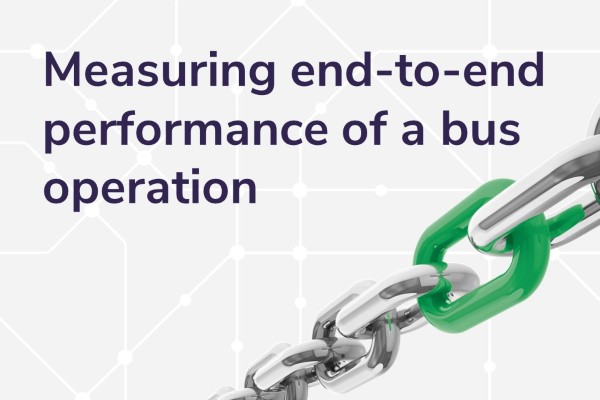


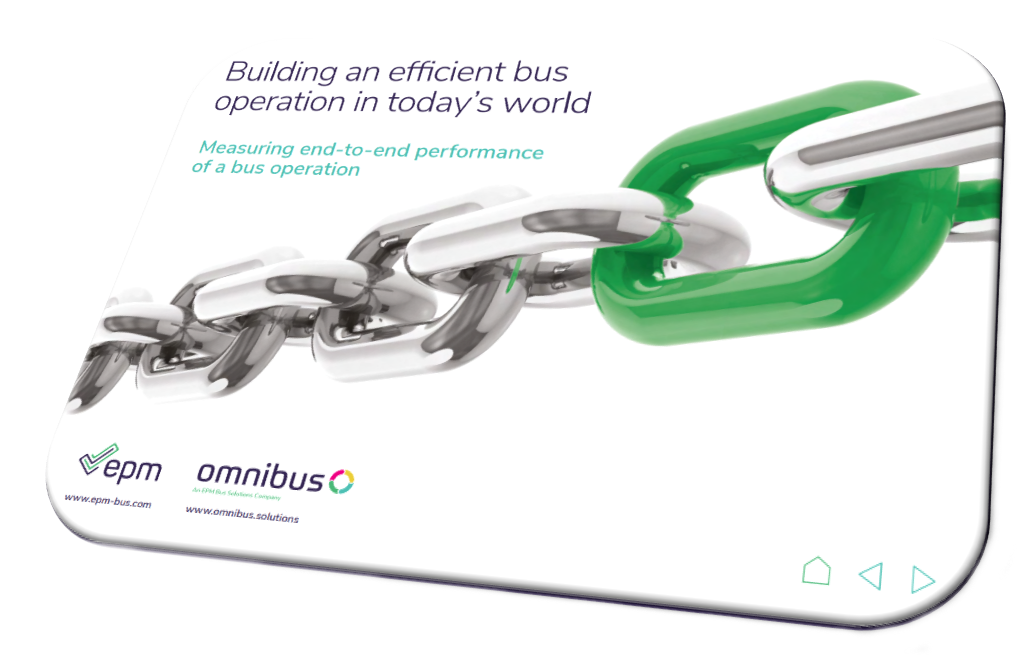


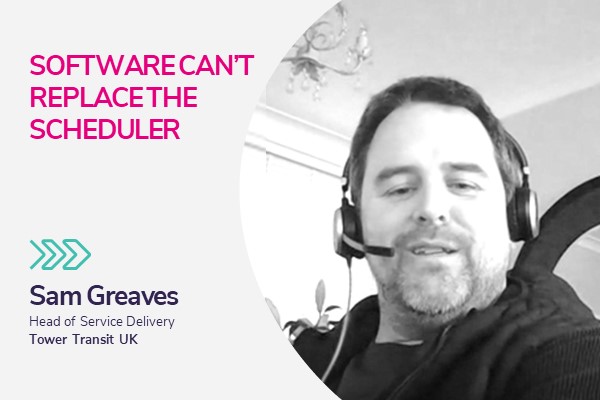

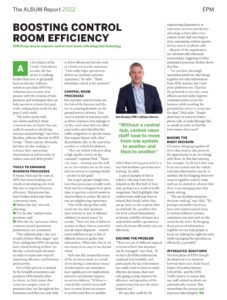
 “They are tasked with providing a high-quality service to the customer,” explains Nick. “Those core tasks – making sure the staff are in, the vehicles are on the road and the service is running reliably – are key to that goal.”
“They are tasked with providing a high-quality service to the customer,” explains Nick. “Those core tasks – making sure the staff are in, the vehicles are on the road and the service is running reliably – are key to that goal.”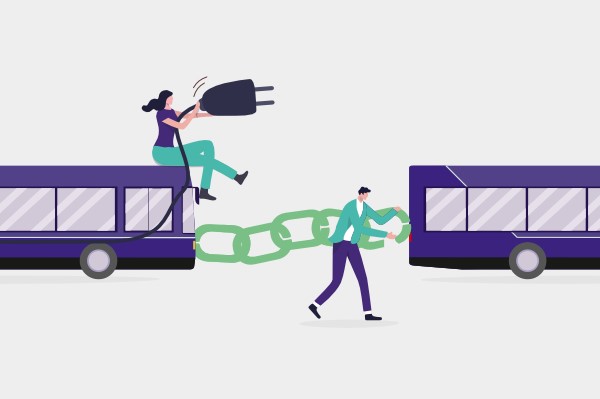


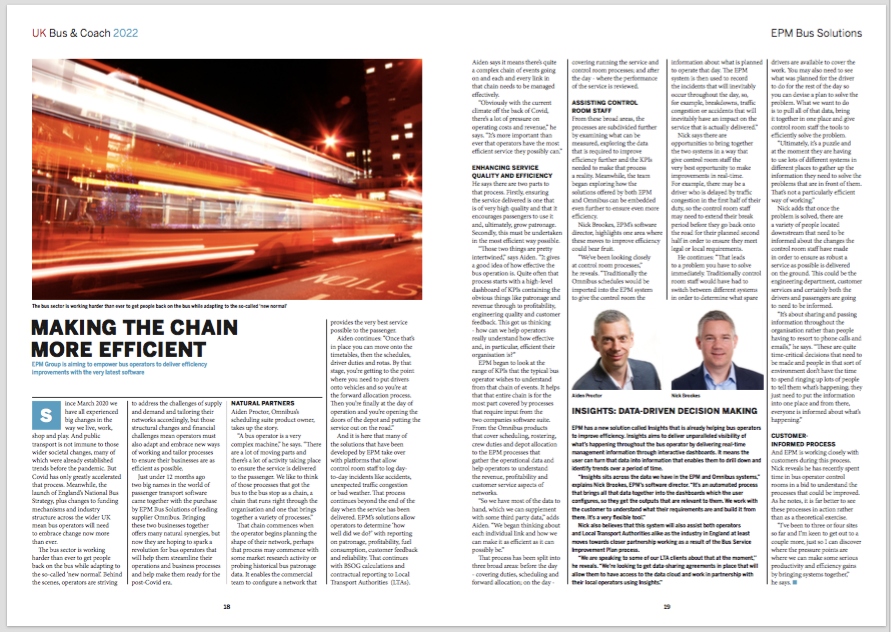
 “A bus operator is a very complex machine,” he says. “There are a lot of moving parts and there’s a lot of activity taking place to ensure the service is delivered to the passenger. We like to think of those processes that got the bus to the bus stop as a chain, a chain that runs right through the organisation and one that brings together a variety of processes.”
“A bus operator is a very complex machine,” he says. “There are a lot of moving parts and there’s a lot of activity taking place to ensure the service is delivered to the passenger. We like to think of those processes that got the bus to the bus stop as a chain, a chain that runs right through the organisation and one that brings together a variety of processes.”

